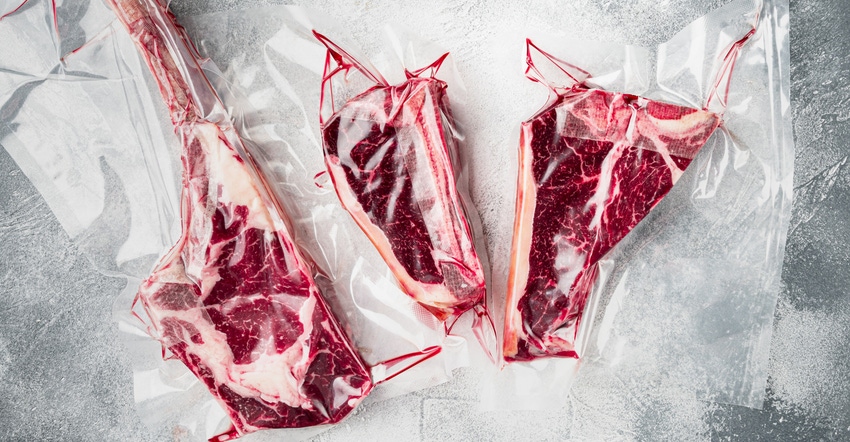June 30, 2021

There is a continuing trend among animal product consumers — they want sustainably and humanely raised meat, milk and eggs. Generation Z is the driving force behind consumers wanting to know exactly where their food comes from and the values behind the farming operation.
With this trend, many cattle, hog and sheep producers are selling animals to customers and sending the purchased animals off for custom processing. Other producers may be choosing to sell retail cuts in a roadside shop or farmers market. If selling lamb directly off the farm is something your operation is doing or has discussed as a future enterprise, turning a profit on sales should be somewhere in the back of your mind.
Pennsylvania State University Extension has published a step-by-step guide to help calculate costs and determine what your retail pricing will look like. Let’s walk through an example using a 120-pound, live-weight lamb that was finished on grain with access to pasture. Using the average dressing percentage of 50% for lamb, we now have a 60-pound carcass.
The cost to raise a lamb
The first step is to determine the cost of raising that lamb. This includes feed, vaccinations and dewormers, bedding and facility costs, plus any other additional operating costs that may be specific to your management system. These costs can include shearing, hauling and transportation, and marketing.
If you need assistance in determining animal-raising costs, Susan Schoenian of University of Maryland Extension has created a feeder lamb and goat enterprise budget sheet that can be found here. Our 120-pound lamb would cost $197.29 to raise, according to her spreadsheet example. Therefore, the lamb would cost $1.64 per pound, live weight.
Next, we divide $1.64 by the dressing percentage to determine the cost per pound of carcass weight. This leaves us with $3.28 per pound of the carcass weight.
The third step is to add a “per-pound processing fee.” This value will be highly variable because it depends on trucking fees and animal processing facility fees. Taking a load of lambs rather than one or two will dilute transportation costs and reduce the added costs.
For this example, let’s use a local processor in Wayne County, Ohio, that is 30 miles round trip from the farm. We’re loading up our example lamb along with nine of its counterparts for a total of 10 lambs in the trailer.
With fuel costing about $3 per gallon and using about 2.5 gallons for the trip, transportation costs are 75 cents per lamb. The facility slaughter fee is $120 per head, so calculate processing on a live-weight basis. For our example lamb, the total added processing fee is $1.75. This additional cost brings the price per carcass pound to $5.03.
From the carcass, no more than 75% of the hanging weight will come back as cuts of meat, according to Christopher Raines of Penn State. So, the next step is to divide $5.03 by the percent of product retained after trimming fat, cartilage and some bone.
Most lamb cuts are bone-in, so you will be able to conserve more product than if you requested boneless cuts, as you may do with pork or beef. This calculation gives us $6.70 per pound of retail cuts. This is the raw cost of the lamb becoming individual cuts of meat.
What’s your profit goal?
Now the big question, how much are you wanting to make from selling lamb? Are you seeking a 25% return or a 40% return? A 25% return prices the meat at $8.93 per pound, whereas a 40% return is $11.17 per pound.
Another aspect to consider is the customer’s willingness to pay. Market demand will influence this, as will economics of the area and trendiness of the product you’re selling. Take a look at grocery store prices. Can you beat those and still turn a profit? Does your farm’s values and operation philosophy align with the ideals of the major consumer generation? Is there truly a market or outlet in your area for homegrown meats?
After you consider these points, you will be better able to adjust your profitability in this venture.
As a reminder, selling meat to consumers requires state or federally inspected slaughter facilities to process animals. Mandatory labeling features are required for retail meats to ensure customer satisfaction and safety.
Animals processed for home use cannot be sold in retail outlets and will be stamped as such. More information on product labeling can be found under the Division of Meat Inspection on the Ohio Department of Agriculture website.
Zynda is an OSU Extension educator in Wayne County, Ohio.
You May Also Like




